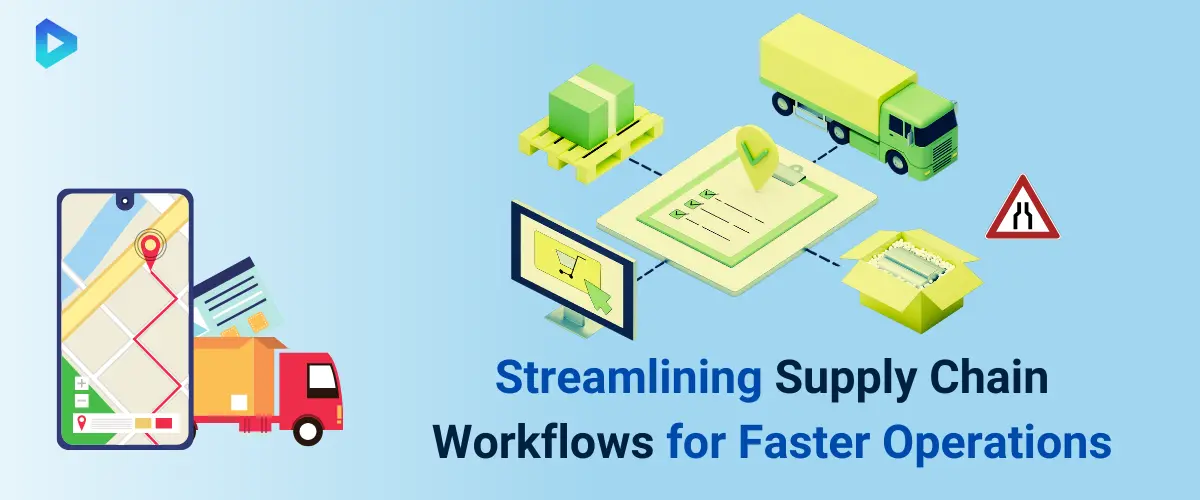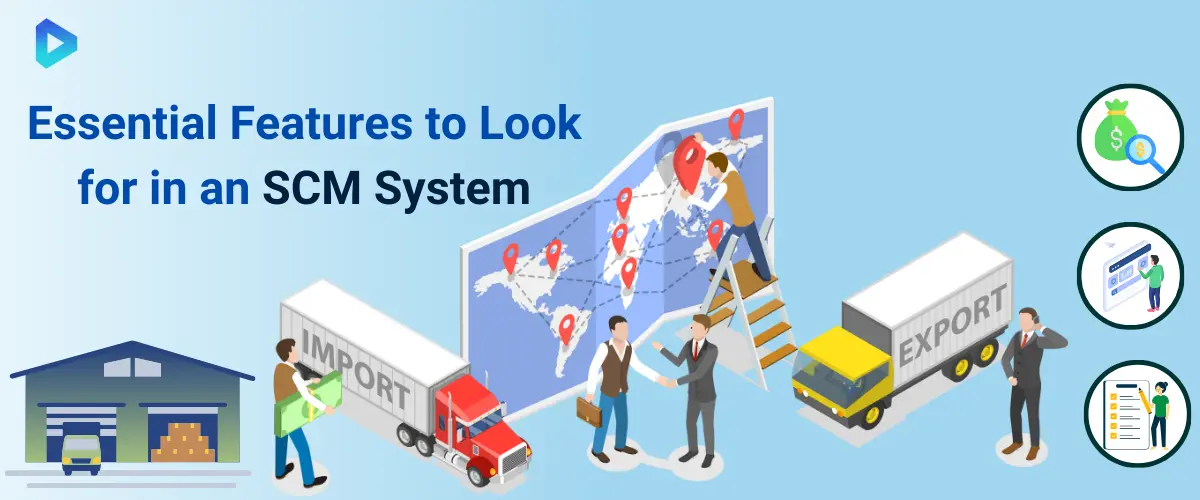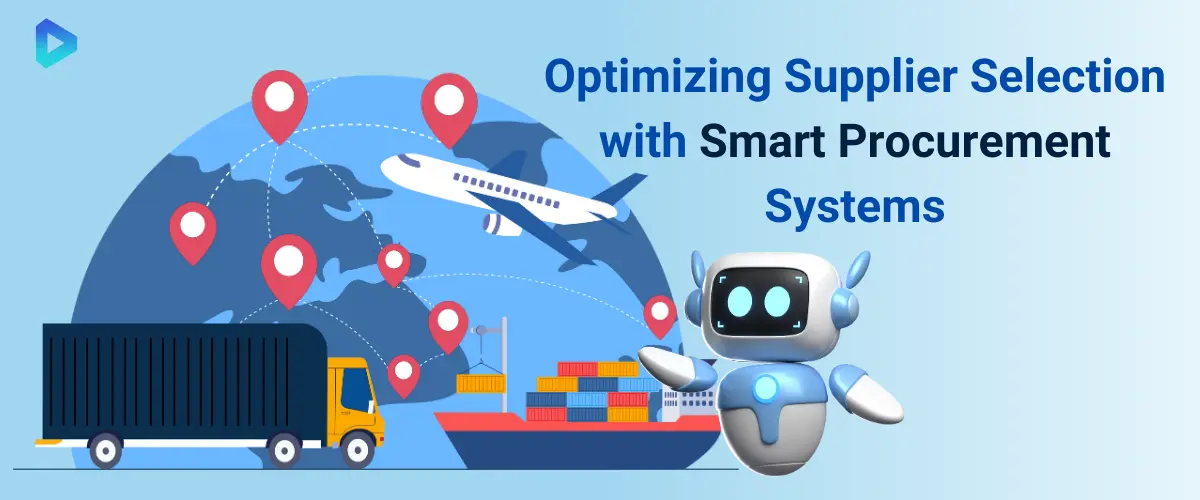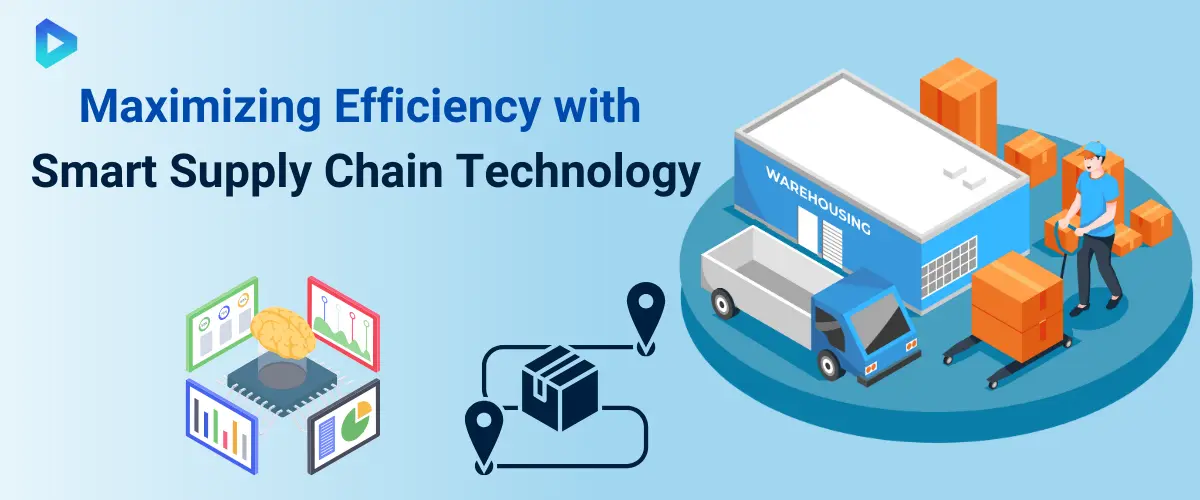
What Are Intelligent Agents in AI? Explained in a Simple Way

Published on: January 09, 2025 Erp
A well-structured supply chain management system ensures seamless coordination between suppliers, manufacturers, and distributors, ultimately improving business efficiency. Implementing an SCM system requires careful planning, integrating advanced technologies, and tracking key supply chain KPIs to optimize performance. Businesses that invest in the right supply chain management strategies experience enhanced productivity, reduced operational costs, and improved customer service. Whether you're a startup or a large enterprise, this blog provides insights on implementing an effective SCM system that drives business growth and competitiveness.
Effective supply chain management ensures seamless operations and enhanced business efficiency.

Supply chain management encompasses various interconnected activities crucial for operational success. The core components include procurement, production, inventory management, logistics, and distribution. Each element requires precision and coordination to minimize costs and maximize efficiency. Procurement involves sourcing raw materials or goods at optimal quality and pricing. Production ensures the transformation of materials into finished products efficiently. Inventory management focuses on maintaining adequate stock levels to meet demand without overstocking. Logistics handles transportation and delivery, ensuring timely distribution to end-users.
Supply chain operations face numerous challenges, from fluctuating demand to disruptions caused by global events. Managing supplier relationships, avoiding stockouts, and reducing lead times are common issues organizations encounter. Additionally, visibility across the supply chain remains a persistent concern. Solutions to these challenges include adopting real-time tracking systems for greater visibility, fostering strong partnerships with suppliers, and utilizing demand forecasting tools. Implementing just-in-time inventory strategies can also help reduce excess stock while ensuring availability.
Technology is a transformative force in modern supply chain management. From automating repetitive tasks to enabling real-time data analytics, it enhances every stage of the supply chain. Technologies such as IoT devices provide granular tracking of goods, while AI-driven tools optimize inventory levels and predict demand accurately. Blockchain technology ensures transparency and traceability, building trust across stakeholders. Cloud-based platforms facilitate seamless collaboration among suppliers, manufacturers, and distributors.
Efficient processes in supply chain management are crucial for seamless operations and growth.

The supply chain process consists of interconnected stages, each vital for business success. These stages include planning, sourcing, manufacturing, delivery, and returns.
By understanding these stages, businesses can identify areas for improvement, streamline operations, and maintain customer satisfaction.
Optimizing supply chain phases involves leveraging technology, enhancing communication, and adopting best practices.
Regularly evaluating performance metrics ensures continuous improvements, leading to cost reduction and higher operational efficiency.
Avoiding pitfalls is key to maintaining a resilient and efficient supply chain.
Proactively addressing these mistakes strengthens the supply chain, enhances customer satisfaction, and boosts profitability.
Choosing the right SCM system is critical for operational success and business growth.

An effective supply chain management system (SCM) is equipped with essential features that streamline processes and improve efficiency.
Evaluate these features to ensure the chosen system aligns with your business needs and goals.
Selecting the right SCM system requires a strategic approach and careful evaluation of options.
A well-researched decision ensures the system meets your operational needs and delivers long-term value.
Supply chain management systems contribute significantly to performance and scalability by addressing core challenges.
By adopting an SCM system, businesses can streamline their operations, boost efficiency, and achieve sustainable growth.
Optimizing procurement processes strengthens supply chain operations and improves overall business performance.

Procurement plays a critical role in ensuring the efficiency and effectiveness of supply chain management. By sourcing high-quality materials and services, businesses can maintain smooth operations and consistently meet customer demands. An optimized procurement process reduces costs, improves product quality, and ensures timely delivery of supplies. Moreover, it helps in maintaining the right inventory levels, minimizing risks associated with shortages or excess stock. A strategic approach to procurement ensures alignment with supply chain goals, creating a streamlined process that enhances the overall operational performance of the business.
Fostering strong relationships with suppliers is essential for a robust supply chain. Consistent and transparent communication ensures that suppliers are informed about business expectations and potential changes in demand. Building trust through regular performance reviews and collaborative planning sessions allows businesses to align objectives with their suppliers. Sharing accurate demand forecasts and offering constructive feedback helps suppliers meet expectations efficiently. Additionally, implementing supplier incentive programs not only motivates partners to deliver superior results but also ensures long-term loyalty.
Effective procurement cost management is a cornerstone of financial health and supply chain optimization. Utilizing procurement software allows businesses to automate manual tasks, gain data-driven insights, and reduce administrative overhead. Strategic sourcing practices, such as selecting cost-effective suppliers and negotiating favorable terms, significantly contribute to cost savings. Consolidating orders for bulk discounts and reducing shipping costs further enhances financial efficiency. Regular expense tracking and performance evaluations enable businesses to identify areas of waste and inefficiency, implementing corrective actions as needed.
Supply chain software empowers businesses to streamline operations, reduce costs, and boost overall efficiency.

Modern supply chain software tools are designed to simplify complex processes and improve decision-making. Tools like SAP SCM, Oracle NetSuite, and Manhattan Associates SCM offer robust features tailored to different business needs.
Key Features to Look For:
These tools also integrate seamlessly with other enterprise systems, such as ERP and CRM platforms, ensuring end-to-end visibility across supply chain functions. By leveraging the right tools, businesses can optimize logistics, improve accuracy, and enhance customer satisfaction.
Integration serves as the foundation for successful supply chain management. When software tools are interconnected, it creates a unified platform where departments such as procurement, inventory, and logistics can collaborate efficiently. Centralized data sharing reduces miscommunication and ensures that every team has access to accurate, up-to-date information. For instance, procurement teams can use real-time demand data to negotiate better deals with suppliers, while logistics teams track shipments to prevent delays. Integration also enables advanced analytics, helping decision-makers identify bottlenecks and improve process flow.
Artificial intelligence and automation are transforming supply chain operations by delivering unmatched efficiency and precision. AI-powered algorithms analyze vast datasets to uncover actionable insights, predict demand fluctuations, and optimize inventory levels. Automation reduces human error and speeds up repetitive tasks such as data entry, order processing, and invoice generation. Robotic process automation (RPA) streamlines logistics operations by managing tasks like route optimization and shipment tracking. AI chatbots enhance supplier communication by addressing routine queries instantly.
Using KPIs ensures measurable growth and optimized performance across the supply chain.
![]()
Tracking supply chain success requires focusing on the right KPIs. These metrics help evaluate operational effectiveness and identify areas for improvement.
Key KPIs for Supply Chain Management:
By regularly monitoring these KPIs, businesses can enhance customer satisfaction, minimize waste, and streamline processes. Selecting KPIs that align with specific business objectives ensures a data-driven approach to supply chain management.
KPIs are powerful tools for driving efficiency when used strategically. Start by aligning KPIs with organizational goals, such as reducing costs or improving delivery times. Regularly analyze KPI data to identify bottlenecks in the supply chain. For instance, if the on-time delivery rate is low, explore transportation issues or warehouse delays.
Leverage technology such as supply chain software or dashboards to track KPIs in real time. These platforms provide actionable insights, enabling teams to make quick adjustments. Conduct periodic reviews to refine KPIs, ensuring they remain relevant to evolving business needs. By integrating KPIs into decision-making processes, businesses can optimize supply chain efficiency and achieve sustainable growth.
Data analytics transforms supply chain KPIs into actionable insights. Advanced analytics tools collect and analyze vast datasets, providing a comprehensive view of supply chain performance. Predictive analytics forecasts trends, helping businesses plan inventory and production more effectively.
For example, analyzing cost per order alongside order accuracy rates can highlight inefficiencies in order processing. Descriptive analytics uncovers patterns, such as recurring delays in specific regions, enabling targeted interventions.
Data-driven decision-making improves agility, allowing businesses to adapt quickly to changing market conditions. By combining KPIs with robust analytics, supply chain managers gain the clarity needed to make informed, strategic decisions that drive success.